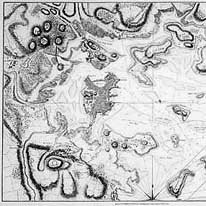“History is by its nature a critical, sceptical discipline”
Last month the London Review of Books published Richard J. Evans’s essay “The Wonderfulness of Us (The Tory Interpretation of History).” It addresses Education Secretary Michael Gove’s efforts to revamp Britain’s national history curriculum, with British-American historian Simon Schama (probably the closest our academy has produced to a celebrity historian) as the point person.
The first task of the curriculum, as Gove and Schama see it, is to foster a sense of British national identity. ‘At a moment fraught with the possibility of social and cultural division,’ Schama writes, we need citizens ‘who grow up with a sense of our shared memory as a living, urgently present body of knowledge’. . . .In this article and argument, the term “Tory” has a current political meaning, of course, but “Tory history” also alludes to “Whig history,” now a discredited approach to analyzing the past. Evans is trying to define history as “a critical, sceptical discipline” even though for centuries the practice of history has been swayed by political ends, particularly in service of those who hold power in a society.
History is by its nature a critical, sceptical discipline. Historians commonly see one of their main tasks as puncturing myths, demolishing orthodoxies and exposing politically motivated narratives that advance spurious claims to objectivity. Schama advocates the return of ‘storytelling in the classroom’ as the ‘necessary condition’ of debate and analysis. He is confident that a narrative approach doesn’t have to rule out analysis, since distinctions can be made ‘between just and unjust conflicts’ and students can develop ‘analytical knowledge of the nature of power’.
But simply telling children that British history has been full of conflict doesn’t tell them anything about the distortions of power; what they need to learn is scepticism about the narratives presented by historians, including of course Schama’s own account of British history. . . .
Gove, Schama and their allies are confusing history with memory. History is a critical academic discipline whose aims include precisely the interrogation of memory and the myths it generates. It really does matter to historians that there isn’t any evidence that Alfred burned the cakes, or that Nelson and Wellington weren’t national heroes to everyone. For those in power, this makes history as a discipline not only useless but dangerous too.
Though the U.S. has no national curriculum, governments at various levels issue standards, approve textbooks, and otherwise exercise some control over history education. When those initiatives have become controversial, the politics line up generally as this essay depicts the situation in Britain: conservatives in favor of national unity, progressives in favor of critical inquiry. Both sides generally support stories and facts, so long as their own favored stories and facts are included (sometimes at the expense of others).









